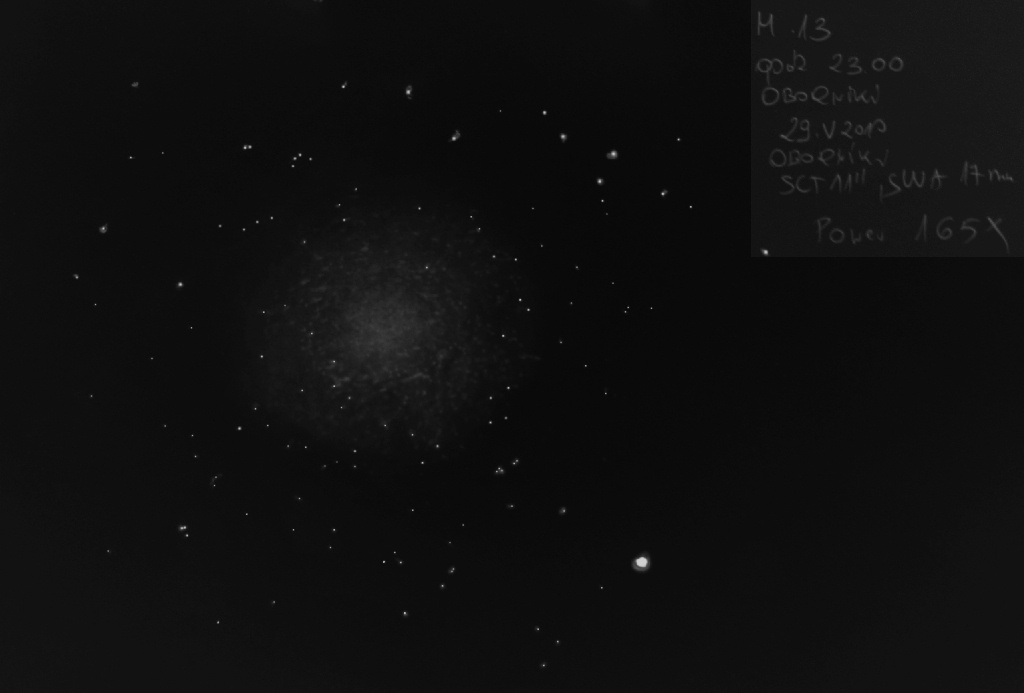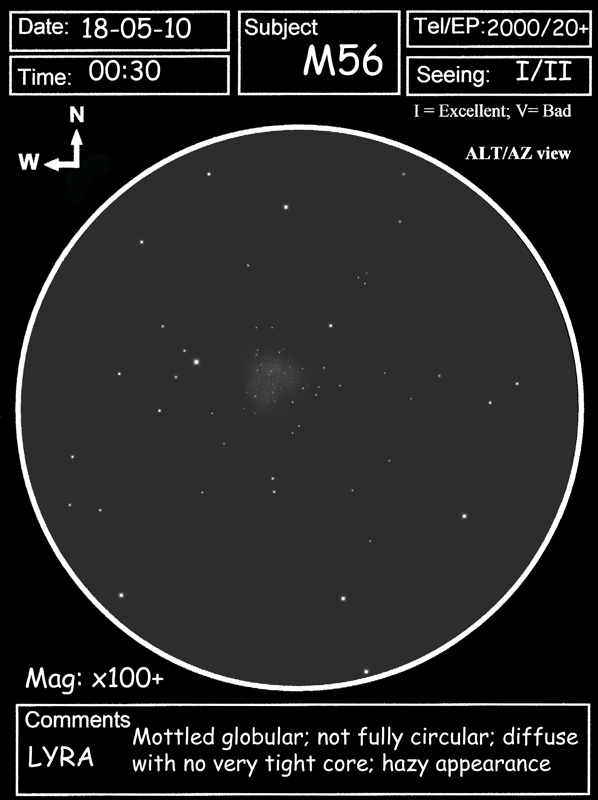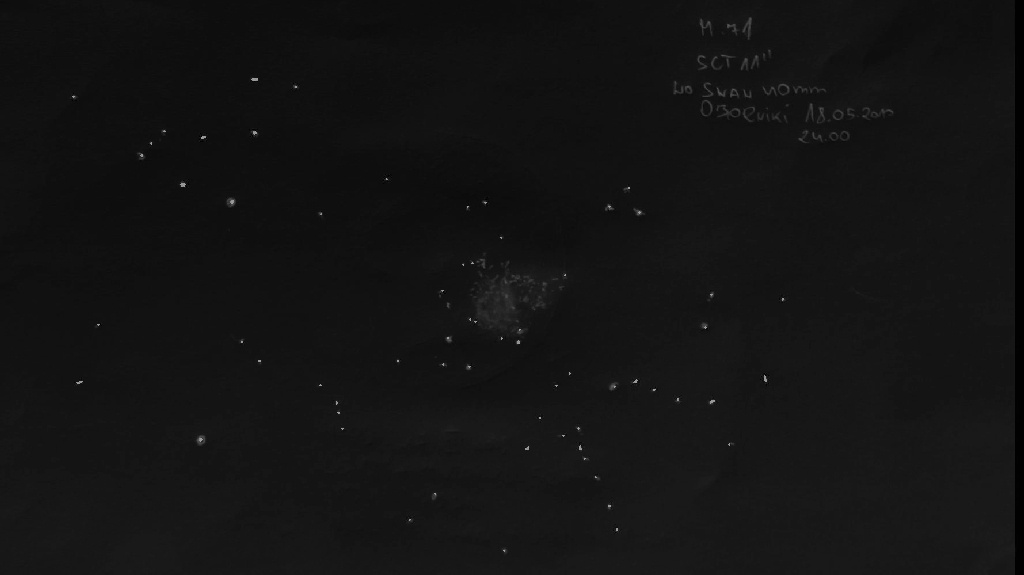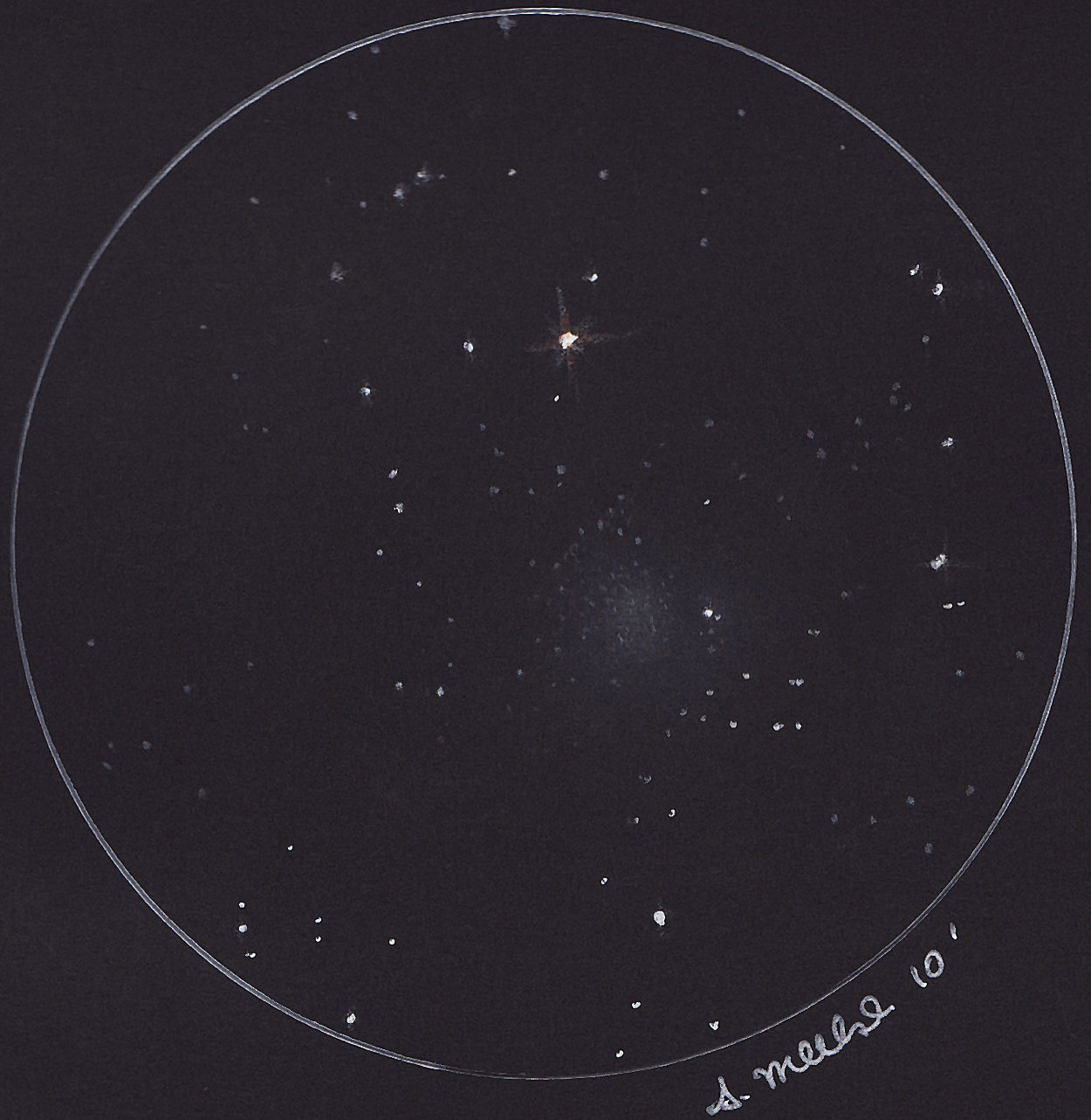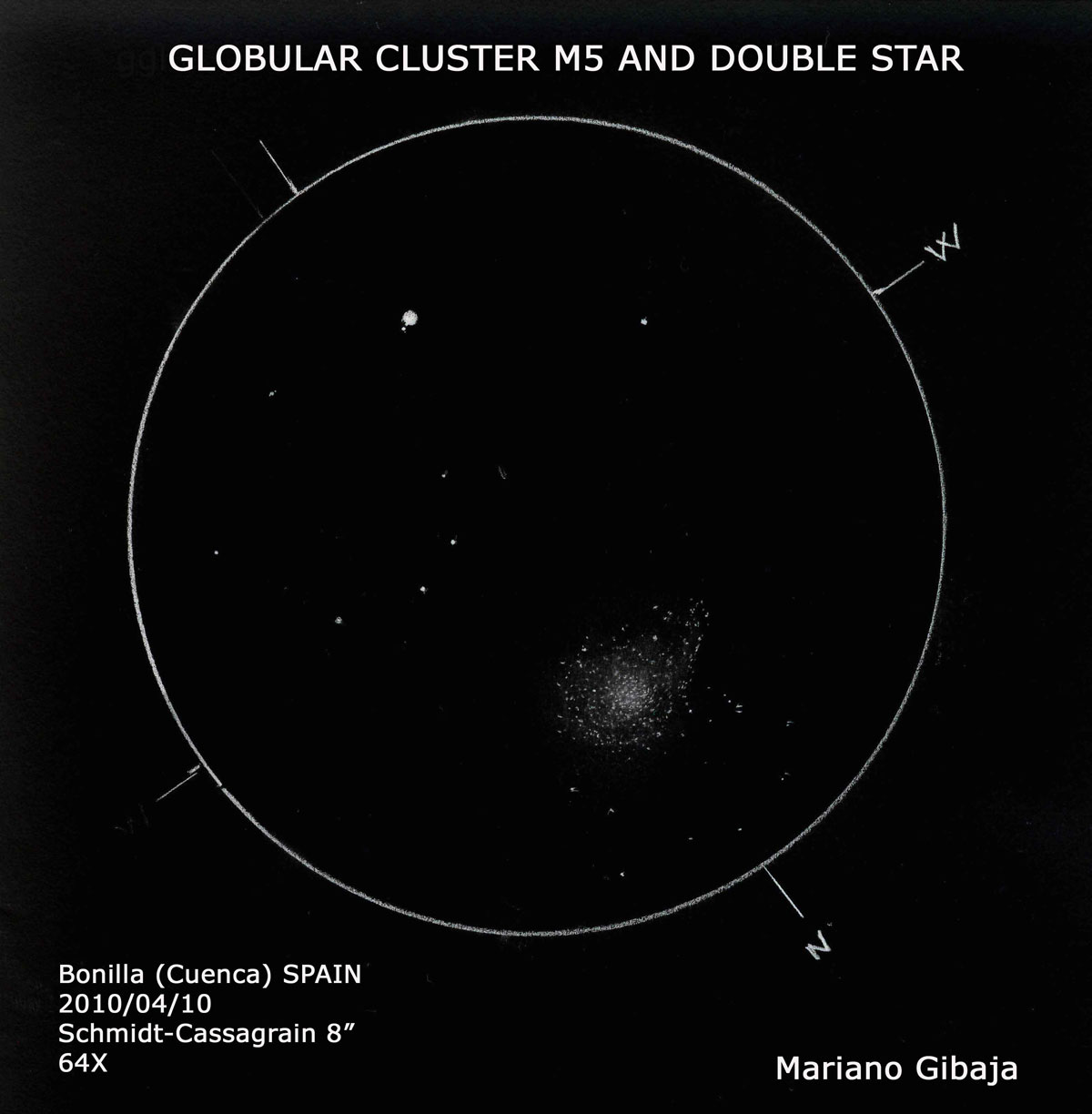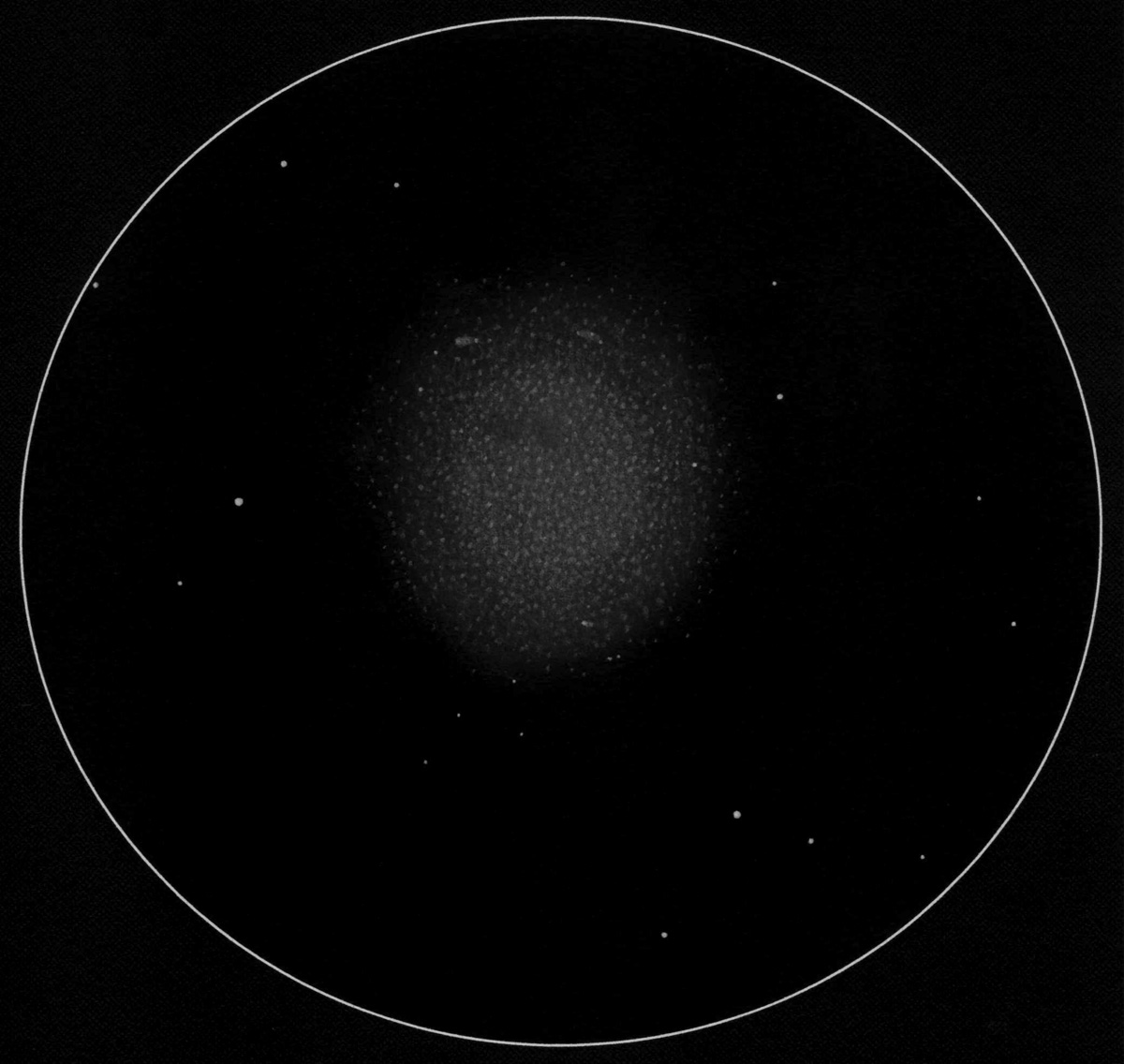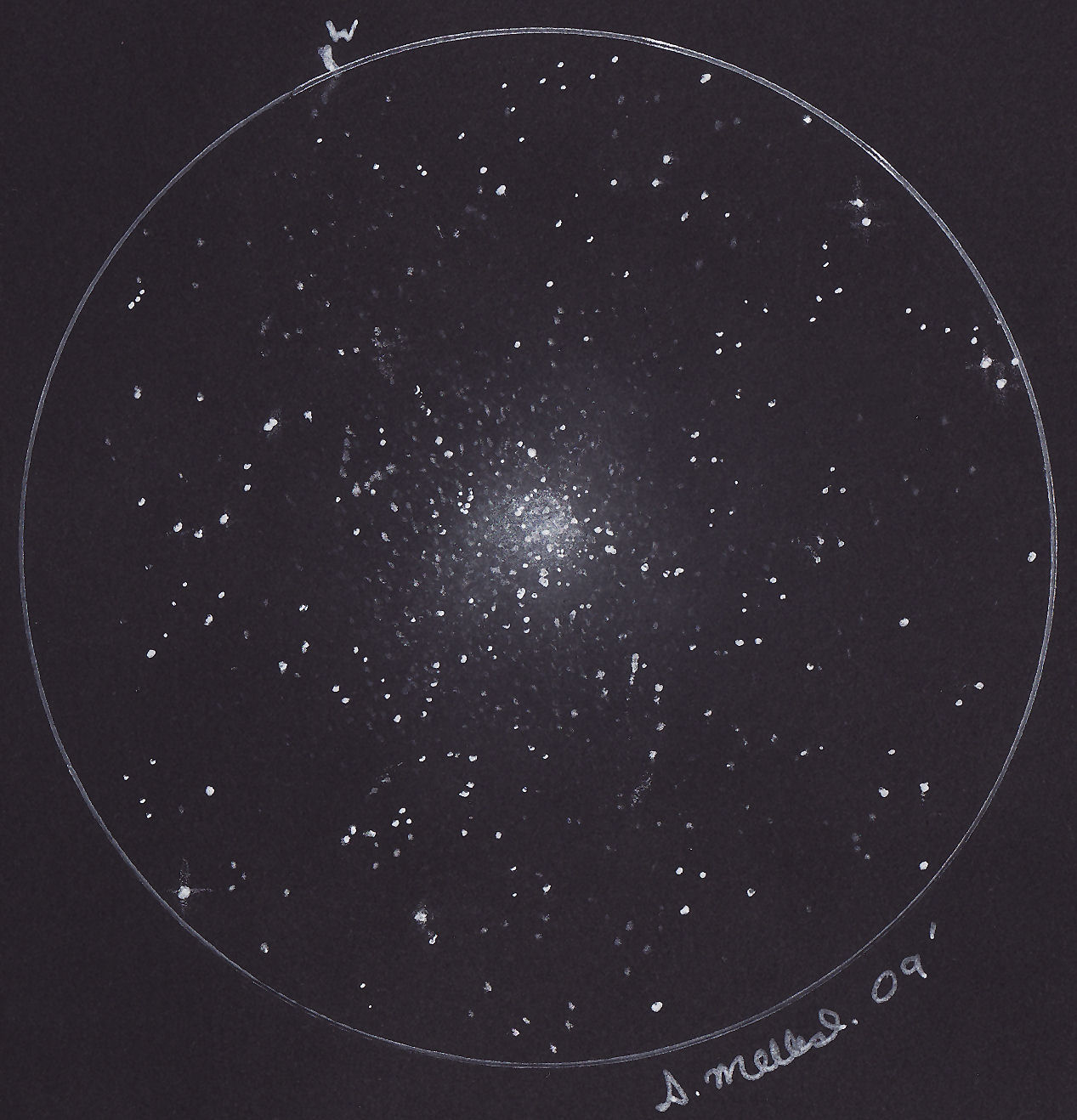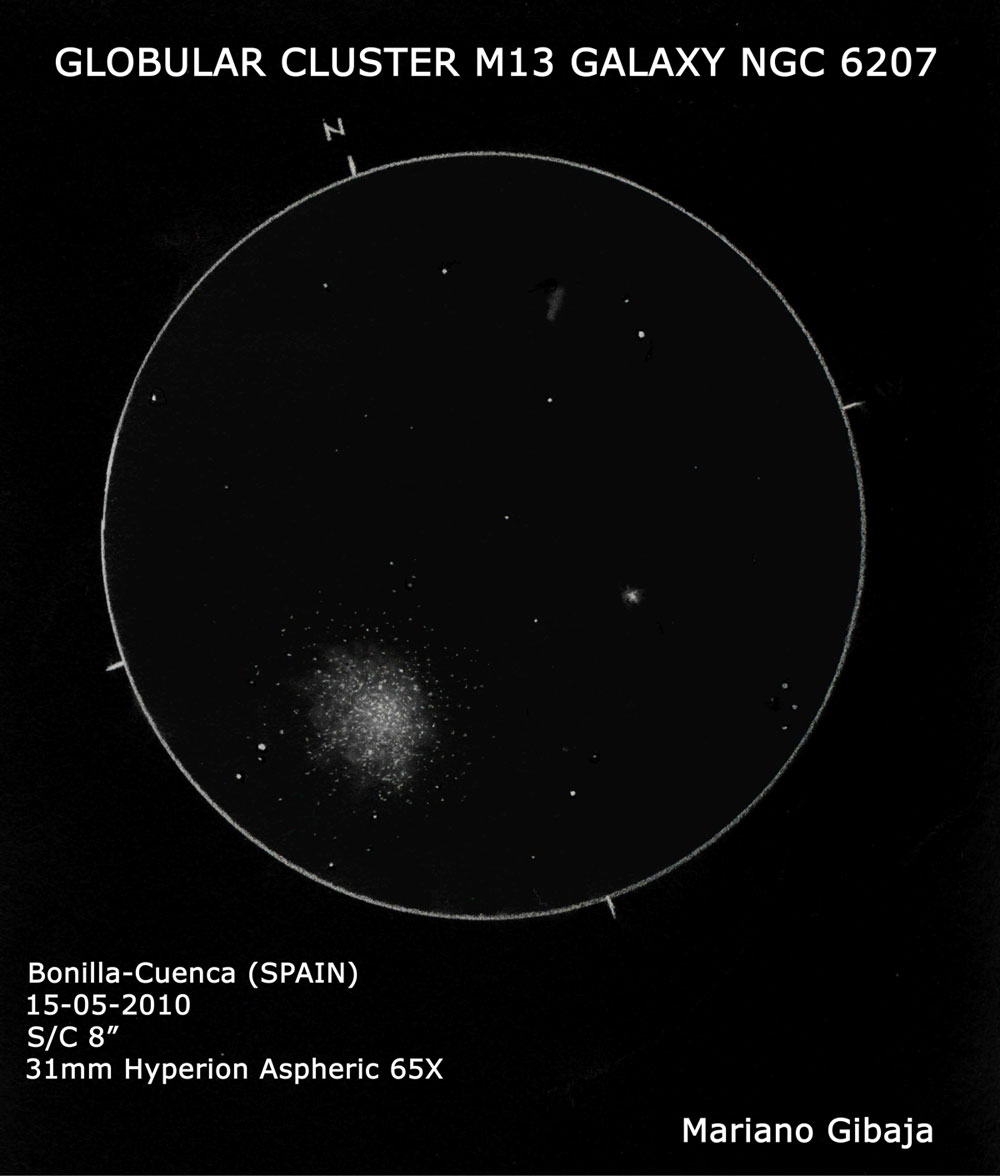
Messier 13 and NGC 6207
By Mariano Gibaja
Object Name: M 13 and NGC 6027 (Constellation of Hercules)
Object Type: Globular Cluster and Galaxy
Location: Bonilla-Cuenca SPAIN
Date: May 15, 2010
Media: graphite pencil, white paper, inverted GIMP 2
Telescope: SCT 8″
Eyepiece: 31 mm Hyperion-Aspheric
Mag.: 65X
Spanish-English translation using Google Language Tools:
The globular cluster M 13 is my favorite to teach my friends. When my
friends look through the eyepiece you always hear the cry: Ohh! How
beautiful! No doubt this cluster is of the most beautiful and impressive
from the sky. It is located at a distance of 24,000 light years. When I look
at M 13 I never forget the small galaxy NGC 6027. It’s very nice to see a
galaxy and a globular cluster at a time.
